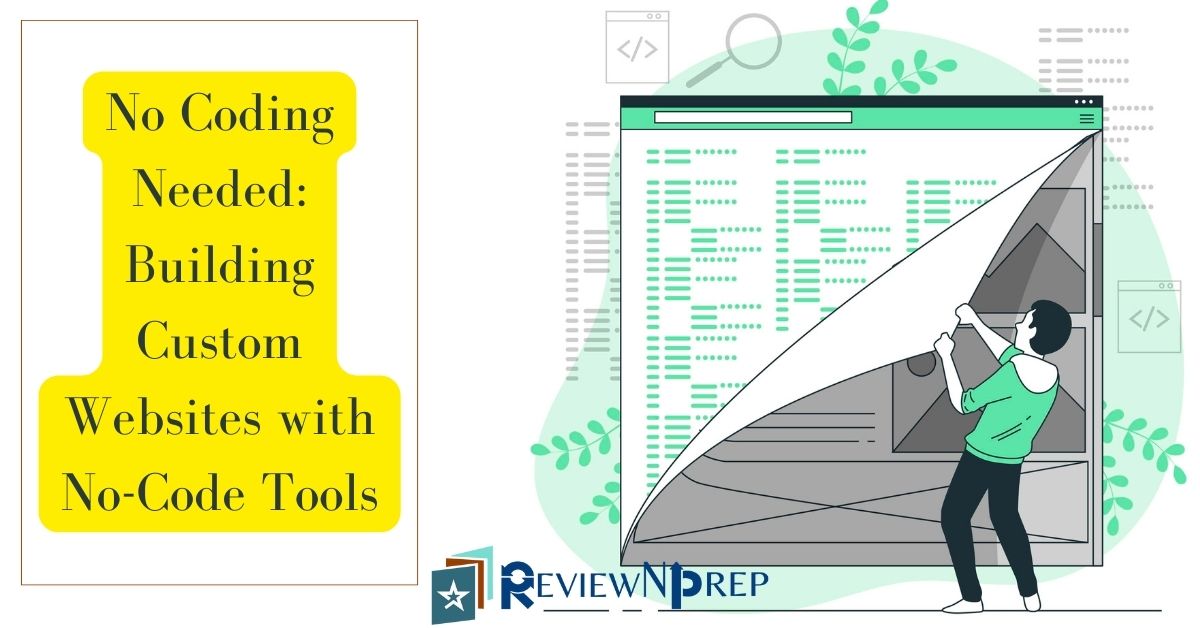In the ever-evolving digital landscape, the emergence of no-code and low-code platforms has empowered both bloggers and businesses to redefine the way they establish their online presence. With a focus on ease of use and expedited development, these platforms have garnered significant attention.
This article delves into the advantages and drawbacks of employing no-code websites, especially for bloggers and businesses seeking to harness the power of technology without intensive coding endeavors.
What is a No-Code Website Builder?
A no-code website builder is a platform that enables users to create websites without requiring manual coding. It offers a visual interface and pre-built components, eliminating the need to write lines of code.
While custom code can be integrated if necessary, no-code builders primarily focus on drag-and-drop functionality, making it easy for business owners to build websites tailored to their specific business requirements, including custom apps and functionalities.
The Primary Benefit: Empowering Non-Technical Users
At the heart of no-code websites lies their primary benefit: empowering non-technical users, commonly referred to as citizen developers, to create and manage websites without any coding experience.
This democratization of web development has paved the way for bloggers and business users to take charge of their online journey, driving digital transformation in an era where an effective online presence is crucial. No longer you need to hire and pay professional developers to code web pages.
Advantages of Using No-Code Websites
- Swift Development Time: Traditional development process involve lengthy coding procedures, whereas no-code platforms enable bloggers and business users to create functional websites through drag-and-drop functionality. This dramatically reduces development time, allowing for rapid deployment of new web pages or blog posts.
- Enhanced User Experience: No-code websites emphasize user experience, providing customizable templates and design elements that can be easily adapted to match brand aesthetics. This focus on aesthetics and usability can contribute to increased visitor engagement and longer on-site durations.
- Incorporating Business Processes: For businesses, no-code platforms offer the advantage of integrating essential business processes into their websites without the need for complex coding. This could include e-commerce functionalities, customer relationship management (CRM) tools, and lead generation forms.
- Enabling Citizen Developers: Both bloggers and business users benefit from the ability to become citizen developers. By embracing no-code platforms, they can take the reins of their online presence, making immediate updates and adjustments without waiting for IT teams to implement changes.
- Low Barrier of Entry: No-code platforms eliminate the need for extensive coding experience, leveling the playing field for individuals and small businesses that may lack skilled developers. This low barrier of entry can foster innovation and creativity in the digital space.
Drawbacks of Using No-Code Websites
- Security Risks: While no-code platforms offer convenience, they may not always provide the same level of security as traditional development methods. Lack of coding oversight might expose websites to vulnerabilities that could compromise data and user information.
- Vendor Lock-In: The ease of building a website on a no-code platform may result in a dependence on that specific vendor. Transitioning away from the platform can be challenging due to compatibility issues and data migration concerns, leading to a vendor lock-in scenario.
- Limited Customization: Despite their user-friendliness, no-code platforms might not be the right solution for custom software development especially for businesses with unique design aspirations. Complex design modifications may require coding expertise that the platform doesn’t support.
- Scaling Challenges: While no-code websites excel in rapid deployment, they might encounter scaling challenges as traffic and complexity increase. Performance issues and longer loading times could deter users and hinder growth.
- Reduced Coding Experience: Although no-code platforms are designed for non-technical users, bloggers and business users who aspire to develop coding skills might miss out on opportunities to gain deeper insights into web development and design. Additionally, these platforms do not expose the source code to the end-users.
Conclusion
In conclusion, no-code websites or low-code development offer an array of advantages, particularly for bloggers and businesses aiming for rapid deployment and an easy to use user interface.
For bloggers, these platforms expedite content creation, requiring no programming experience and allowing them to focus on engagement. For businesses, no-code platforms streamline the integration of critical processes.
However, it’s vital to acknowledge the drawbacks, such as security risks and potential vendor lock-in. Striking a balance between the benefits of no-code development and traditional coding approaches will ensure a successful digital journey that meets both present and future needs.
Further Reading:
Designing a Sales Page that Converts: Best Practices for Online Course Creators
